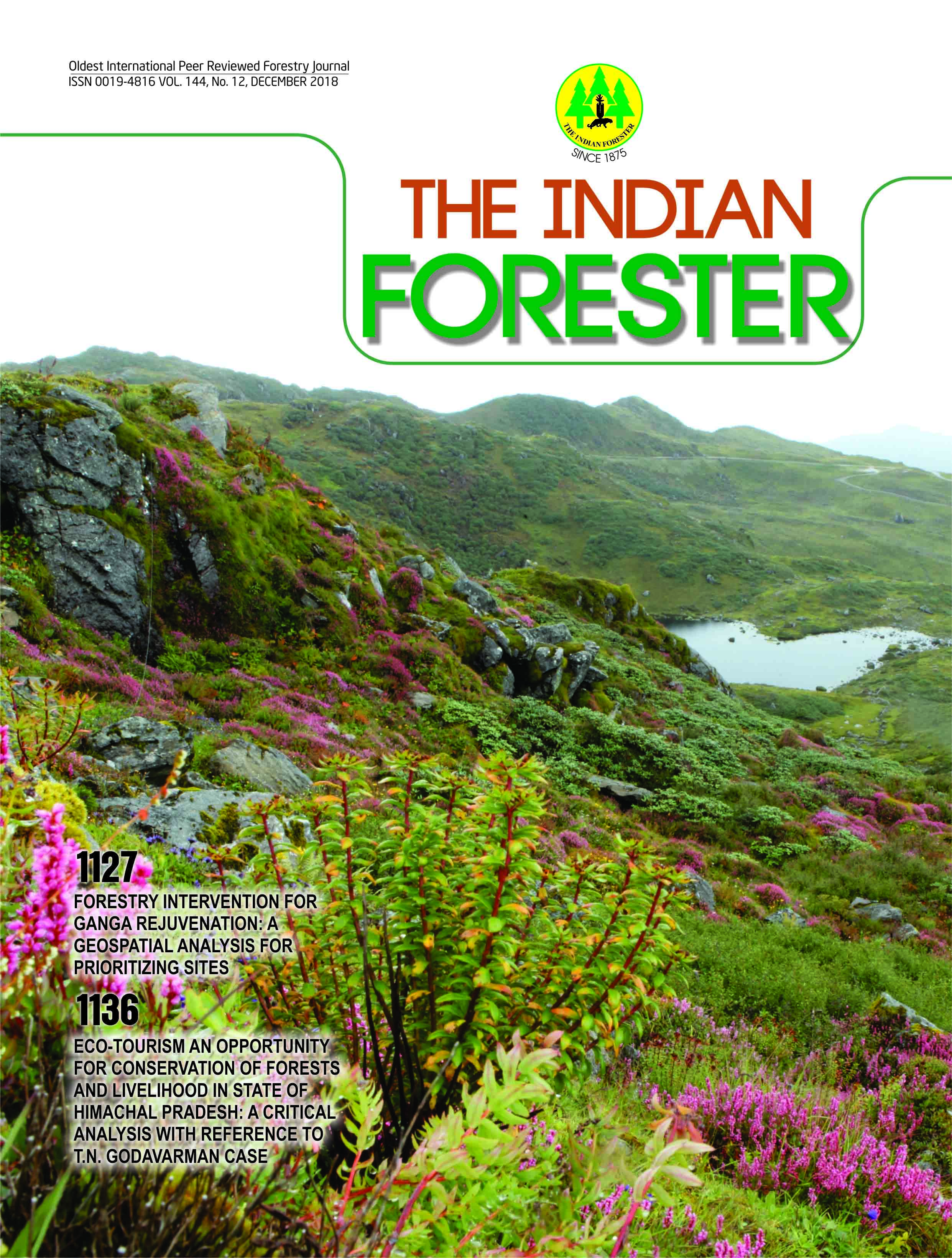Managing Harvests of Fuel Wood and Fodder: Major Drivers of Forest Degradation in Sariska Tiger Reserve, Rajasthan
DOI:
https://doi.org/10.36808/if/2018/v144i12/141848Keywords:
Drivers of forest degradation, Unsustainable harvest, Sustainable limit, Sariska Tiger Reserve, LivelihoodAbstract
More than 300 million of rural population in India is fully or partially dependent on forests for their livelihood. Forests are gradually degrading over the years due to unsustainable harvest of fuelwood and fodder, which is being considered as the major drivers of deforestation. This paper aims to identify the major drivers of degradation in the dry deciduous forest of Sariska Tiger Reserve of Rajasthan. The study also quantifies the extent of unsustainable harvest of fuelwood and fodder in the study area. The research study further estimates the potential forest biomass projection owing to substitution of unsustainable harvest with alternative sources of livelihood. The result states that among the various forest products harvested from the core area of Sariska Tiger Reserve, the maximum dependence of households is on self consumption of fuelwood followed by fodder and sale of fuelwood. It also includes suggesting policy interventions to overcome the unsustainable harvest of the forest produce.References
Aggarwal A., Paul V. and Das S. (2009). Forest resources: livelihoods, degradation and climate change in Green India 2047 renewed: looking back to change track. The Energy and Resources Institute, New Delhi, 91-108pp.
Champion H.G. and Seth S.K. (1968). A Revised Forest Types of India. Manager of Publications, Government of India, Delhi.
Da Silveira R. (2011). Management of wildlife in the food plain: A critical look at threats, bottlenecks and the future in Amazonia. Pages 137-144 In: The Amazon varzea: the decade past and the decade ahead. M. Pinedo-Vasquez, M. L. Ruffino, C. Padoch, and E. S. BrondÃzio, eds. Springer, New York, USA.
Tiger Conservation Plan. (2014). Sariska Tiger Reserve, Dept. of Forest, Rajasthan.
Forest Survey of India. (2016). India State of Forest Survey Report, 2016.New Delhi: FSI, Ministry of Environment of Forests and Climate Change (MoEF&CC), Government of India.
Herold M., Román-Cuesta R.M., Mollicone D., Hirata Y., Laake P.V., Asner G.P., Souza C., Skutsch M., Avitabile V. and MacDicken K. (2011).Options for monitoring and estimating historical carbon emissions from forest degradation in the context of REDD+. Carbon Balance and Management, 6:13
Hosonuma N., Herold M., De Sy V., De Fries R.S., Brockhaus M., Verchot L., Angelsen A. and Romijn E. (2012). An assessment of deforestation and forest degradation drivers in developing countries. Environmental Research Letters.
ICAR (1985). Nutrient requirements of livestock and poultry in India. Indian Council of Agricultural Research, New Delhi.
IPCC (2006). Good Practices Guidelines for National Greenhouse Gas Inventories Switzerland: Intergovernmental Panel on Climate Change.
Kissinger G., Herold M. and De Sy V. (2012). Drivers of deforestation and forest degradation: A synthesis report for REDD+ Policymakers. Lexeme Consulting, Vancouver Canada. 87-92 pp.
Krishna Kumar J., Fox J. and Anitha V. (2012). Non-timber forest Products: Livelihoods and Conservation Economic and Political Weekly, Vol xlvii, 132-139pp.
Muhammed N, Koike M., Haque F. and Miah M.D. (2008). Quantitative assessment of people oriented forestry in Bangladesh: a case study from Tangail Forest Division. J.Environ. Manage., 88(1): 83-92.
Shackleton C.M., Shackleton S.E., Buiten E. and Bird N. (2007). The importance of dry woodlands and forests in rural livelihoods and poverty alleviation in South Africa. Forest Policy Econ., 9(1):558-577.
Sharma J.V. (2014). Assessment for designing REDD+ projects in India. TERI Report 2014. 113-114 pp,.
Skutsch M. and Trines E. (2008). Operationalizing reduced degradation within REDD. Policy Paper No. 2: Kyoto: Think Globally Act Locally project.
UNFCCC (2008). Informal meeting of experts on methodological issues related to forest degradation. Chair's summary of key messages. Bonn, October 20-21, 2008.
Downloads
Downloads
Published
How to Cite
Issue
Section
License
Unless otherwise stated, copyright or similar rights in all materials presented on the site, including graphical images, are owned by Indian Forester.





